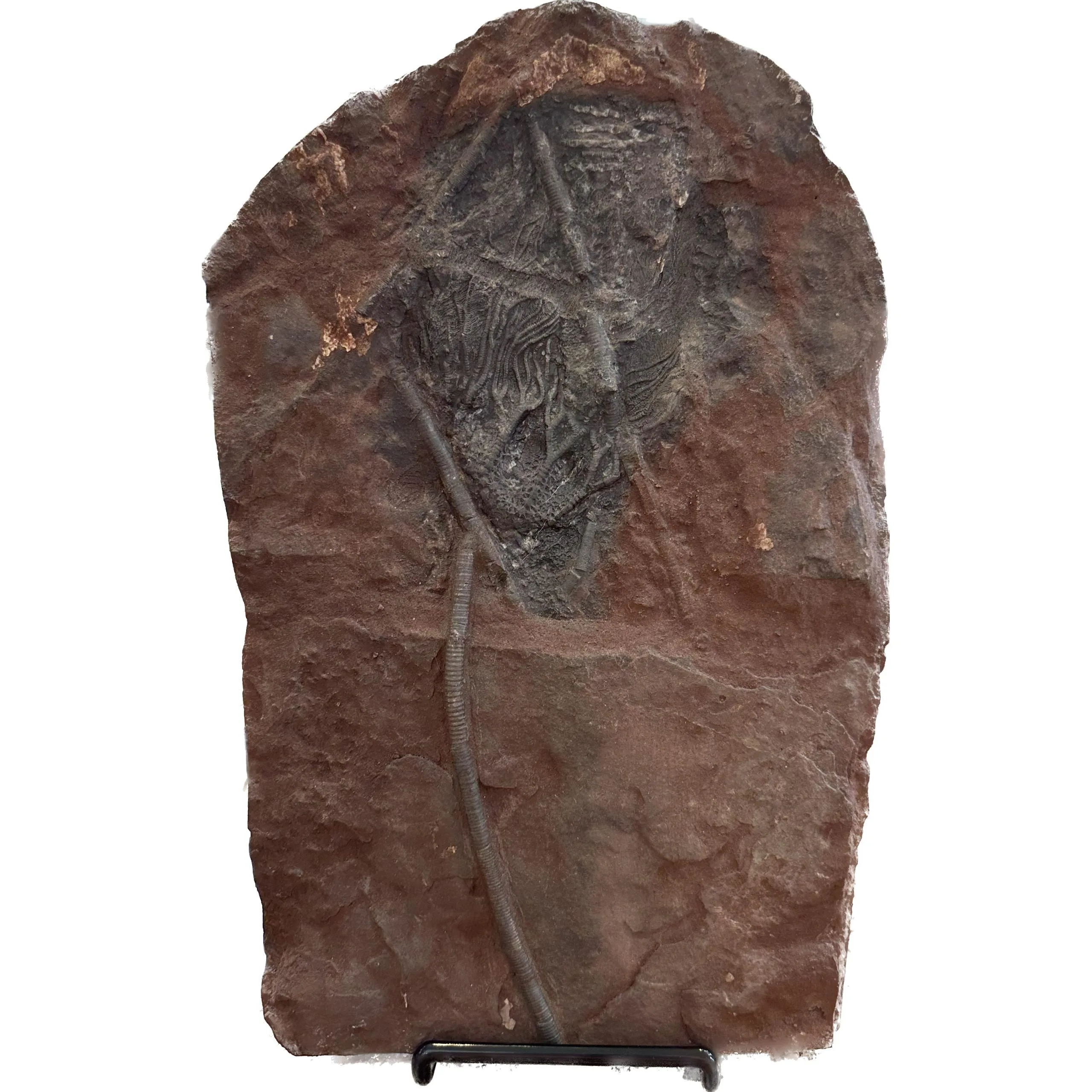Showing all 6 results
-
Crinoid fossils- Scyphocrinites Elegans
Original price was: $395.00.$295.00Current price is: $295.00. -
Crinoid – Scyphocrinites Elegans
Original price was: $395.00.$295.00Current price is: $295.00. -
Crinoid, Scyphocrinites Elegans
$375.00 -
Crinoid – Scyphocrinites Elegans
$375.00 -
Crinoid – Scyphocrinites Elegans
Original price was: $395.00.$245.00Current price is: $245.00. -
Crinoid mass mortality 3ft square
Original price was: $4,800.00.$3,495.00Current price is: $3,495.00.
Fossil crinoids, also known as sea lilies or feather stars, are marine echinoderms that have existed for over 500 million years. These fascinating creatures belong to the class Crinoidea and are characterized by their flower-like appearance, comprised of a cup-shaped body (calyx) attached to a stem composed of numerous segments known as ossicles. Crinoids are distant relatives of starfish and sea urchins.
During their heyday in the Paleozoic Era (approximately 542 to 251 million years ago), crinoids were abundant in Earth’s oceans, populating shallow seas and forming vast colonies on the ocean floor. Today, crinoids are still present in modern oceans, albeit in smaller numbers and limited to deeper waters.
The fossils of crinoids are found worldwide, preserved in sedimentary rocks such as limestone, shale, and sandstone. These fossils offer valuable insights into ancient marine ecosystems and serve as important indicators of past environmental conditions. Crinoid fossils come in various forms, ranging from individual ossicles and fragmented stems to beautifully preserved calyxes and entire specimens still attached to their original stem.
One of the most remarkable features of crinoids is their remarkable diversity in form and size. Some species had delicate, feather-like arms extending from their calyxes, which they used to filter feed on plankton and organic particles in the water. Others had stout, branching arms adapted for grasping prey or anchoring to the substrate. Additionally, crinoids exhibited a range of sizes, from diminutive species measuring a few centimeters to giants spanning several meters in height.
Today, fossil crinoids play a crucial role in paleontological research, helping scientists reconstruct ancient marine environments and understand the evolution of life on Earth. They are prized by collectors and enthusiasts for their beauty, diversity, and historical significance in Earth’s natural history.






